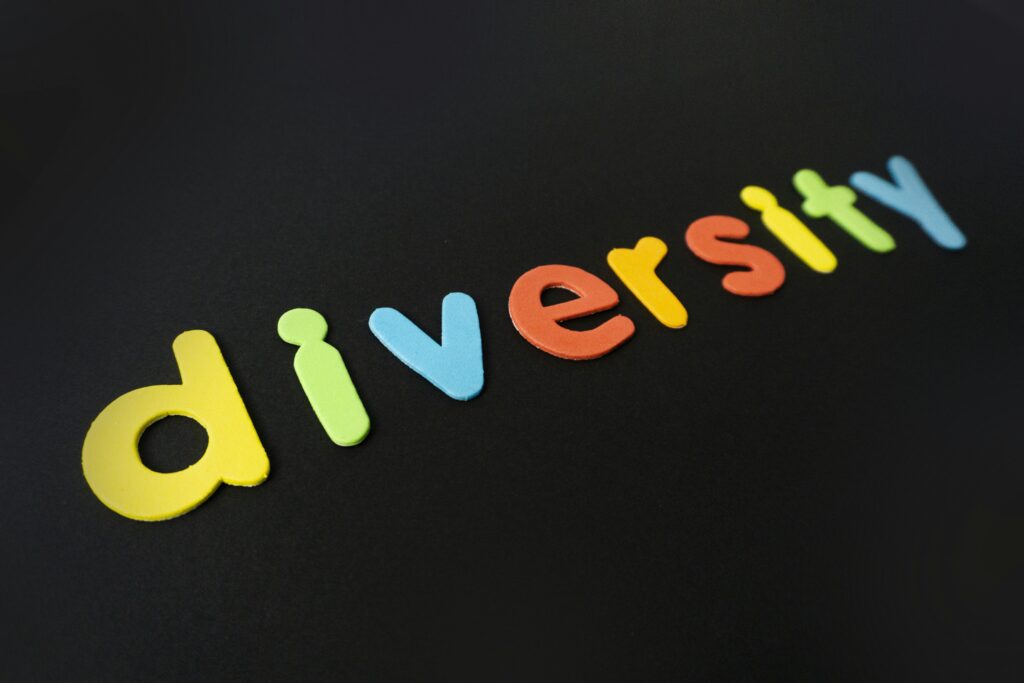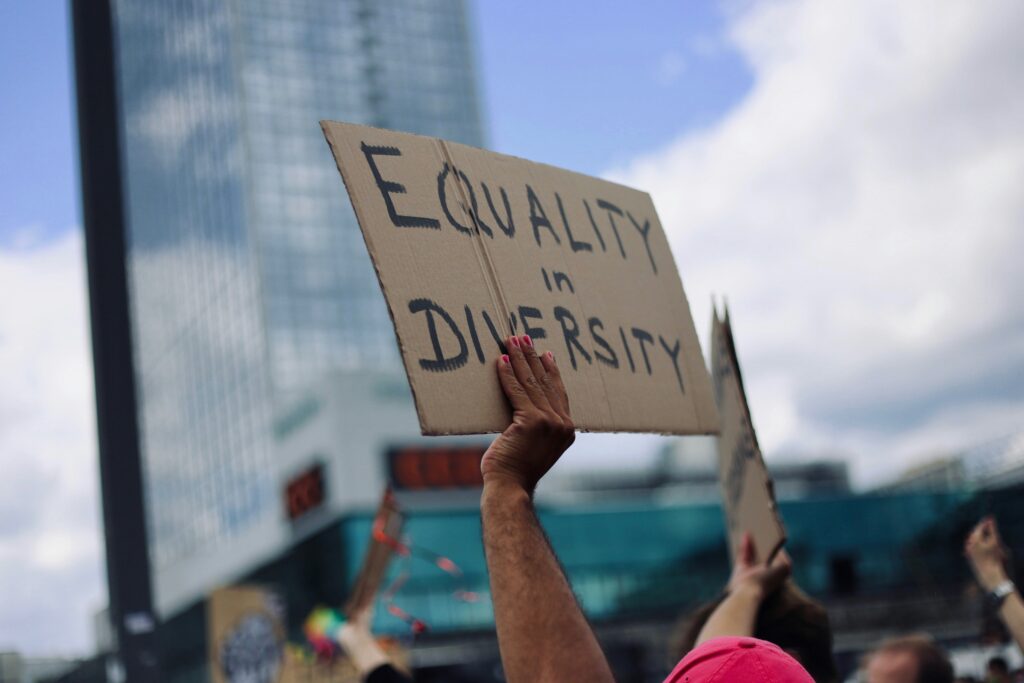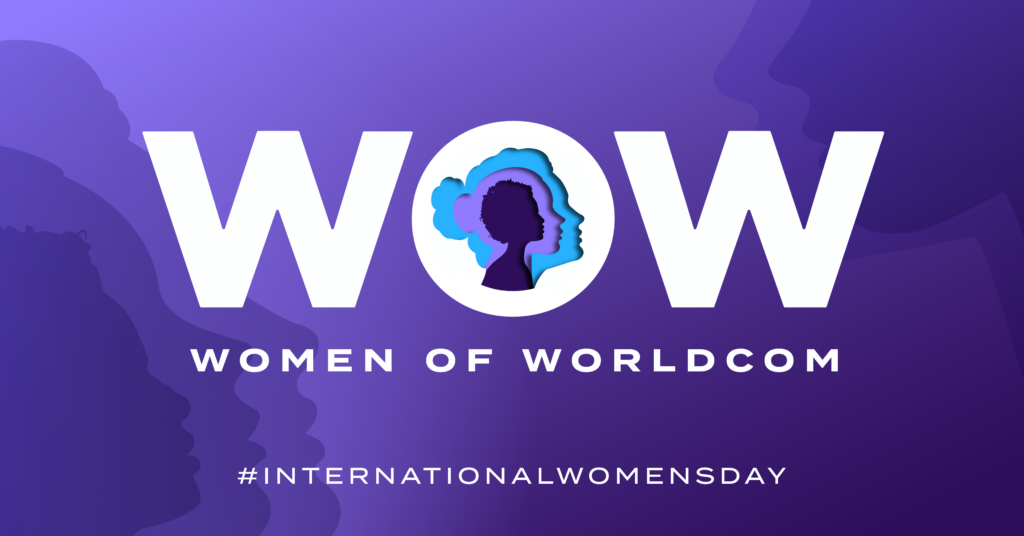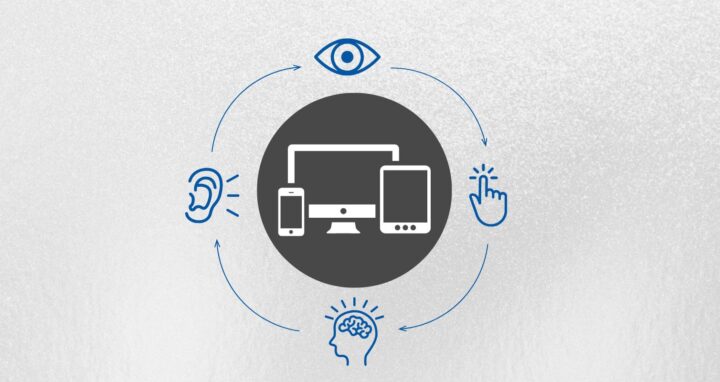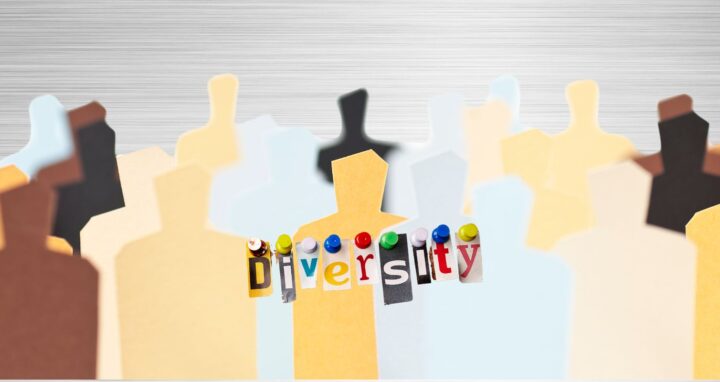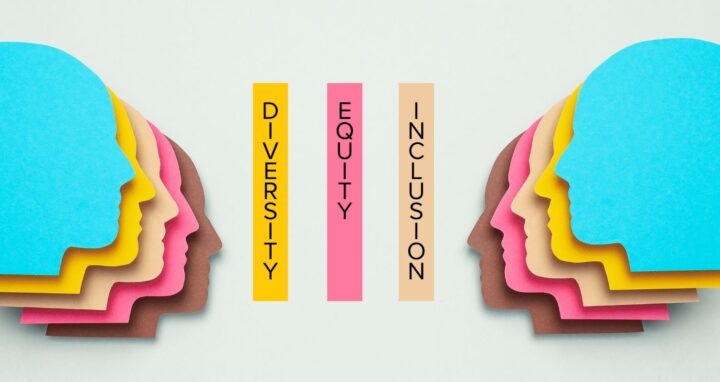Diversity, equity and inclusion (DEI) tops the Worldcom Confidence Index with more than three times the CEOs discussing this topic than customer satisfaction.
In this fourth post in our five-post series, the Women of Worldcom Public Relations Group look at how DEI needs to be embedded in an organization’s culture if you want to drive belief and belonging.
The cultural dimension in terms of diversity and inclusion is crucial
By Emilie Molinier-Ravage, Partner, Maarc, Paris, France
The Worldcom Confidence Index Barometer is enlightening and showcases that diversity and inclusion is the #1 concern for company leaders worldwide. Having a policy on this issue is a must. Does it make it an easy topic to communicate? Not at all.
The cultural dimension in terms of diversity and inclusion is crucial. In France, proclaiming how inclusive your company is and how it helps to reveal everyone’s “great potential” can very quickly be perceived by certain stakeholders as Diversity Washing, whereas in the United States such campaigns can be perfectly welcome and are widely accepted.
In some regions and, for some companies, it can be a better option to agree to work behind the scenes to build solid, unassailable proof points. They can then focus on targeting those directly impacted by the issue through their communication efforts… employees. Implementing an inclusion and diversity policy means first and foremost instilling its values and principles internally – ensuring that everyone fully subscribes to them and puts them into practice. The candidates only come after everyone is on board.
Ensure that managers act as role models
By Catherine Purgly, Managing Partner, GRIP, Zurich, Switzerland
Ensure that managers act as role models and demonstrate seriousness: Show an attitude from the outset, act credibly and involve all employees in the process. This requires a person responsible for a diversity & inclusion strategy, an annual budget and action planning.
Regular training on the topic is crucial in order to promote the exchange of experiences and increase awareness of the topic. Individual development plans can also be introduced as an individual measure. This strengthens employees’ self-confidence and brings out skills that can be better promoted. Monitoring success contributes to the determination of a practiced Diversity & Inclusion culture. Clear metrics should be used to measure the success of diversity and inclusion efforts, including the impact on creativity and innovation. This can be done through regular surveys, feedback sessions and performance indicators.
Organizations need to prioritize D&I as an integral component of their business model
By Jenn Lewis, Vice President, The Pollack Group, Los Angeles, USA
Organizations need to prioritize D&I as an integral component of their business model. First and foremost, D&I initiatives need to start at the top. Leaders need to demonstrate a genuine commitment to diversity and inclusion, not just through words but through actions and company resource allocation. Actively seeking diversity in recruitment and hiring processes, offering diversity training to increase awareness, and creating support networks for underprivileged employees are a few areas in which leaders can create a culture of diversity and inclusion that not only fosters innovation and creativity but also promotes a sense of belonging and mutual respect among all employees.
Weave DEI initiatives into the fabric of your culture
By Emily Greifeld, Vice President, The Pollack Group, Los Angeles, USA
Effective diversity and inclusion strategies are the backbone of any forward-thinking operation. Data has proven that a diverse workforce is a stronger workforce. Yet, we face a landscape divided by demographics and politics, making a robust and empathetic DEI approach essential. True progress demands concrete actions – transparent hiring practices, equitable pay, and inclusive leadership. Anything less is a disservice to the potential of your teams and the collective intelligence they bring. Let’s not just agree that diversity matters; let’s act on it with the urgency and conviction it deserves. Simply put, embracing diversity and fostering inclusion requires more than just policy changes; it demands a culture shift within the organization. Leaders must exemplify inclusivity, and every level of management must be held accountable for cultivating an environment where diversity is not only respected but sought after as a critical resource. It’s about dismantling the systemic barriers that impede true inclusivity and building bridges in their place – bridges that allow for the celebration of differences. We need to stop treating DEI initiatives as a checkbox and start weaving them into the fabric of our culture.
Do not succumb to external pressure to minimize, scale back, or eliminate DEI initiatives
By Jacqueline Liu, Senior Vice President, The Pollack Group, Los Angeles, USA
First and foremost, do not succumb to external pressure to minimize, scale back, or eliminate DEI initiatives. This applies to your own internal programs as well as how you counsel clients. It’s a short-term, short-sighted decision. Workplace culture and inclusive practices may be jargon to working professionals, but not to students and young professionals. These cohorts are the future of work, and we need to recognize that they weigh culture as much as compensation. But with little or no working experience, it may be difficult for new workers to articulate what inclusive programs, policies, and initiatives should be. You don’t know what you don’t know. So, it’s up to us, the literal adults in the room, to stay one step ahead and lay the foundation now. Much has been made of the generational differences in communication and expectations for work, but this is one area with little room for negotiation. We – companies, brands, and organizations – must meet them where they are if we are to have a fighting chance at retaining the best young talent.
Organizations and leaders need to make DEI part of their core values
By Lisa Wolleon, Executive Vice President, Coyne PR, New Jersey, USA
Actions speak louder than words. Organizations and leaders need to make it a part of their core values and set measurable goals to continually improve. Leaders must demonstrate the behavior firsthand and ensure it’s practiced at every level – from the people to the policies. Employees should be encouraged to share their experiences and be a part of the continuous improvements associated with building a more inclusive culture. It’s not a one-and-done; organizations must resolve and evolve together to succeed.
Leaders must exemplify inclusion in daily interactions and decisions by welcoming different perspectives
By Cathy Clarkin, Chief Financial Officer, Coyne PR, New Jersey, USA
If an organization values diversity and inclusion, the leadership team must create a culture where all employees feel valued, understood, and appreciated. Leaders must exemplify inclusion in daily interactions and decisions by welcoming different perspectives. The entire staff should be trained on diversity and inclusion, and the training should be ongoing. Gathering the staff to listen to guest speakers on various DEI topics is a good way to demonstrate commitment and unification.
Inclusion is the key that ensures the effectiveness and longevity of diversity and equity efforts
By Clara Heffernan, Chief People Officer, Coyne PR, New Jersey, USA
For organizations aiming to be innovative, creative, and progressive, embracing Diversity, Equity, and Inclusion (DEI) is essential. Among these, Inclusion is the key that ensures the effectiveness and longevity of diversity and equity efforts. Here is advice for leaders on fostering an inclusive environment:
The journey towards an inclusive environment begins with the leadership team understanding its importance for both the organization and its clients. Leaders must recognize that diverse perspectives strengthen the organization and enhance client work, which benefits everyone involved. This understanding forms the foundation for genuine support for DEI initiatives.
Leaders cannot fully support DEI efforts without a deep understanding of their value. It’s crucial for them to grasp how embracing diverse perspectives not only fortifies the organization but also significantly improves client services. With this knowledge, leaders are better equipped to champion inclusivity throughout the organization.
Inclusivity flourishes in environments where individuals feel safe and encouraged to share their ideas and experiences. Organizations can nurture such spaces by hosting round-table discussions, inviting guest speakers for interactive Q&A sessions, and forming DEI committees that operate independently of senior leadership and HR. These initiatives empower employees to voice their thoughts and experiences, reinforcing their sense of belonging.
Encouraging open dialogue where employees can express themselves freely is vital for building an inclusive culture. This involves not only providing platforms for sharing but also cultivating an atmosphere of respect and openness where all contributions are valued.
To make inclusion truly impactful, involve employees in the decision-making process. This approach validates their contributions, making them feel valued and included. When employees see their input shaping decisions, it reinforces their sense of belonging and commitment to the organization.
Continuously assess the effectiveness of inclusion strategies and be willing to adjust based on feedback and outcomes. Inclusion is an ongoing process that benefits from regular evaluation and adaptation.
In conclusion, the path to an inclusive organization requires a committed leadership team that understands the value of diversity and inclusion, creates spaces for open dialogue, involves employees in decision-making, and continuously evaluates the impact of these efforts. By prioritizing inclusion, organizations can ensure that their diversity and equity initiatives are not just present but thriving, leading to a more innovative, creative, and successful future.
Fostering an environment where diverse perspectives are valued creates a place of inclusivity and provides for better work output
By Jennifer Kamienski, Executive Vice President, Coyne PR, New Jersey, USA
Trust = Transparency. Fostering an environment where diverse perspectives are valued creates a place of inclusivity and provides for better work output. We need to work to consistently facilitate discussions with the goal of understanding perspective that are aren’t your own – the more the merrier. Also, stay aware. Stay alert. It’s easy to be complacent. In today’s world, it is just not acceptable. Do I get caught up in the everyday? Yes, but I can’t use that as an excuse. We all have to do better to not ignore the bigger issues that could be infecting your culture. Ask the questions. Open the dialogue for fruitful change. Being uncomfortable is okay if it leads to great discoveries for the betterment of the world.
Good communication within the organization and feedback from employees are the foundation of the entire inclusion process
By Vessela Denborova, Communications & Event Manager, Janev and Janev, Bulgaria
Diversity and inclusion (D&I) are key aspects of running an organization. Their proper application not only determines what the work environment will be like, but also leads to better business results. For me, good communication within the organization and feedback from employees are the foundation of the entire inclusion process.
We need to talk about it, do training and take everyone’s opinion into account. A very common barrier to inclusion in an organization is unconscious bias. This leads to the treatment of some employees in an unfavorable way.
Here are a few tips that I think would help improve diversity and inclusion efforts that involve the entire employee lifecycle in an organization:
- Transparency in hiring – it must be clear at the outset of the hiring process that the company is committed to the principles of diversity and inclusion and that failure to recognize and respect differences will not be tolerated.
- Education and training where the principles of inclusion and awareness of prejudice are discussed. This will reduce unconscious prejudice.
- Multicultural Respect – promoting inclusion by respecting all holidays that employees celebrate.
- Employee feedback (anonymous) whereby we give employees the opportunity to speak up and share their concerns/opinions.
- Establish equal opportunity policies that clearly spell out what the company’s diversity and inclusion policy is and make these policies available to all employees in the company.
Organizations must value the exceptional organizational skills of working mothers
By Veronika Zahradníková, Business Development Manager, PRAM Consulting, Prague, Czech Republic
Embracing Diversity and Inclusion, organizations must value the exceptional organizational skills of working mothers. These professionals excel in time management and prioritization, delivering tasks effectively within limited time frames. However, they thrive in low-stress environments, necessitating supportive workplace policies. Flexible work arrangements, such as telecommuting and flexible schedules, enable working mothers to balance their professional and family commitments efficiently. Additionally, creating mentorship programs tailored for them fosters professional growth and job satisfaction, enhancing the workplace’s inclusivity. Leaders should implement policies benefiting working mothers, like extended maternity leave, effective return-to-work programs, and accessible childcare, demonstrating a commitment to diversity and inclusion. This approach boosts workforce engagement, innovation, and productivity. Moreover, leaders and bosses must act with empathy, understanding the unique challenges working mothers face. Encouraging open communication, offering career development opportunities, and providing stress management resources are essential. By integrating working mothers’ skills and perspectives, companies foster a supportive, dynamic, and inclusive culture, crucial for navigating the modern business landscape.
Ensure that each person is recognized and deployed for their unique experiences and skills
By Kara Lundberg, VP, Talent, RH Strategic, Seattle, USA
An organization’s approach to diversity and inclusion should be unique to them and their business goals. Diversity has expanded to include more than race, age, ethnicity and gender but also consider all kinds of differences. There are many when we really think about it. If your organization can celebrate and look for differences, you benefit from new perspectives and opinions that feed remarkable work.
Anchored by your organization’s values and culture, understanding your individual employees’ passions and interest can directly impact inclusion efforts ensuring that each person is recognized and deployed for their unique experiences and skills. We are focused on building positive and trusting relationships between managers and their employees, and mentors and their mentees. These and other informal partnerships in the workplace are designed to offer support to all and ensure everyone feels they have someone in their court when challenges arise. We strive to build an inclusive team where we can embrace our individual contributions to best serve our colleagues and our clients. For any inclusion efforts to truly succeed, your leadership must set the standard and uphold expectations.
Foster a sense of belonging for all
By Susie Horgan, Founder and Managing Director, Springboard Communications, Cork, Ireland
By embracing diversity and fostering inclusion in the workplace, organisations can unlock a wealth of benefits, including driving innovation, gaining fresh perspectives, and empowering employees. As Managing Director and founder of my company, I recognise the critical importance of cultivating an inclusive culture where every member of my team feels valued and respected, not only for team retention but also for overall organisational success.
Creating such an environment requires proactive steps, including actively listening to diverse perspectives, addressing biases, and providing opportunities for all employees to contribute. Therefore, leadership plays a pivotal role in championing D&I, setting clear expectations, and ensuring accountability for the creation of an inclusive atmosphere.
Organisations need to prioritise diversity in recruitment and promotion practices, ensuring equitable opportunities for underrepresented groups. Training and educational programmes can also promote cultural competency among employees.
Ultimately, embedding D&I into every aspect of organisational operations, from talent management to client interactions, is crucial for fostering a truly inclusive workplace that drives success and fosters a sense of belonging for all.
Leadership cannot be solely responsible for creating a more inclusive organization
By Sharon Neumann, Chief Operating Officer, Airfoil Group, Michigan, USA
Simply stating that your organization embraces and values DE&I isn’t enough. Creating a plan and taking consistent action to advance your company culture is an ongoing commitment company leaders need to make. The plan needs to encompass recruiting strategies for diverse talent, educational and training elements for staff, and access to external resources offering diverse perspectives. Additionally, leadership cannot be solely responsible for creating a more inclusive organization. The entire staff needs to commit to a diverse and inclusive culture by doing things like networking to meet diverse talent, consulting with external resources, participating in company initiatives, and offering new perspectives.
Creating an inclusive work environment means a continuous willingness to re-evaluate standard practices
By Mary Correia-Moreno, Executive Vice President of Operations and Partner, Nuffer, Smith, Tucker, San Diego, USA
A prioritization of DEI must begin with an organization’s leaders while allowing room for feedback and conversation from the broader team to ensure inclusion at all levels. Creating an inclusive work environment means a continuous willingness to re-evaluate standard practices. As organizations continue to do the work, they must ensure they’re not just talking the talk but walking the walk. DEI should be a standard of practice and at NST, we are implementing standards for hiring, work events, holidays, on-going training, surveys, etc., to keep ourselves accountable in our DEI efforts. Each organization should evaluate how they can implement standard DEI practices while being able to amend these practices to be increasingly more inclusive.
Disagreement in the workplace must be managed well
By Vessela Denborova, Communications & Event Manager, Janev and Janev, Bulgaria
Managing different perspectives is a big challenge for more and more company leaders. Building on the theme of diversity and inclusion, organisations are becoming more diverse and global, and communication in the workplace is becoming more informal. Leaders must be willing to engage with conflicts arising not only from the nature of the work, but also from the different ideologies, beliefs, life experiences and cultural traditions that employees bring to the workplace.
In most cases, leaders tend to sidestep conflict and expect it to go away, and employees follow suit. However, this leads to a build-up of problems and a decrease in productivity.
With all the global conflict and controversial public issues, polarization and disagreement in the workplace is a process that must be managed well. There is a need to promote tolerance and receptivity in the workplace. This can be done through training, seminars and role plays led by specialists in the field. The ultimate aim is to make it clear that accepting different points of view does not require changing opinions or tolerating different views that one section of employees find irrational and offensive. What is needed is greater insight, mutual respect in the workplace and a willingness to cooperate.
Can we help?
If you would like help from any of the experts featured in this post, please contact them via individual agency pages or via their LinkedIn profiles. For any of our other experts please contact Todd Lynch or visit our offices page.
And, if you’d like to keep your communications strategy ahead of the curve, see what over 100,000 C Suite executives around the world are thinking by visiting our Worldcom Confidence Index global tracker.

